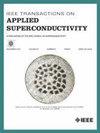Tooling Design, Coil Fabrication, and Prototype Coil Performance Verification for a 28 GHz Nb3Sn ECR Ion Source Magnet
IF 1.8
3区 物理与天体物理
Q3 ENGINEERING, ELECTRICAL & ELECTRONIC
引用次数: 0
Abstract
Worldwide several superconducting electron cyclotron resonance (ECR) ion sources have been developed and in operation for heavy ion accelerators using Nb-Ti magnets. To explore the use of high-field Nb28 GHz Nb3Sn ECR离子源磁体的模具设计、线圈制造和原型线圈性能验证
在世界范围内,已经开发了几种超导电子回旋共振(ECR)离子源,并使用铌钛磁体作为重离子加速器。为了探索利用高场Nb$_{3}$Sn来突破ECR磁体中Nb- ti的场极限,必须采用最先进的Nb$_{3}$Sn线圈制造技术和工具设计来解决Nb$_{3}$Sn导体的挑战性特性。在此之前,我们报道了用Nb$_{3}$Sn六极线圈构建28 GHz超导ECR离子源的总体磁体设计、导体选择和导体特性。本文介绍了Nb$_{3}$Sn六极线圈原型的制备进展。特别地,我们介绍了工具的设计,Nb$_{3}$Sn六极线圈的制造,以及用于性能验证的镜像磁铁。
本文章由计算机程序翻译,如有差异,请以英文原文为准。
求助全文
约1分钟内获得全文
求助全文
来源期刊

IEEE Transactions on Applied Superconductivity
工程技术-工程:电子与电气
CiteScore
3.50
自引率
33.30%
发文量
650
审稿时长
2.3 months
期刊介绍:
IEEE Transactions on Applied Superconductivity (TAS) contains articles on the applications of superconductivity and other relevant technology. Electronic applications include analog and digital circuits employing thin films and active devices such as Josephson junctions. Large scale applications include magnets for power applications such as motors and generators, for magnetic resonance, for accelerators, and cable applications such as power transmission.
 求助内容:
求助内容: 应助结果提醒方式:
应助结果提醒方式:


